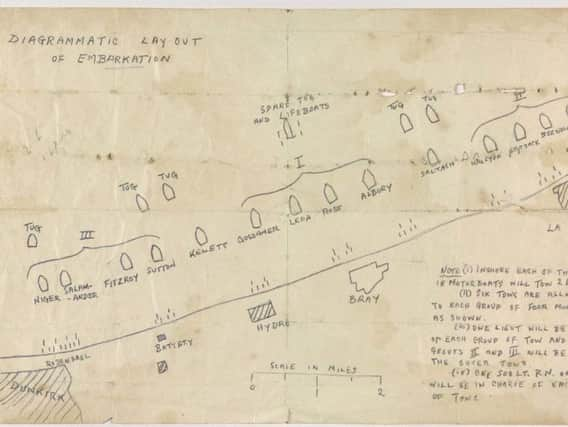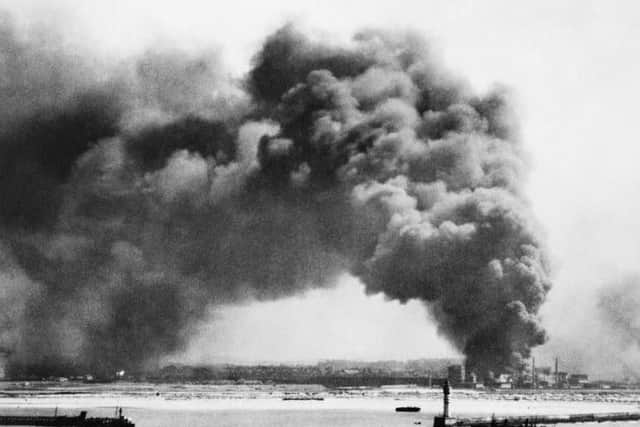Never-before-published sketch offers 'fascinating' insight into planning of Dunkirk evacuation


Now a never-before-published sketch offers a new insight into the evacuation of Dunkirk, in which more than 300,000 surrounded Allied soldiers were plucked from the French beaches and saved from the advancing Germans - a seemingly miraculous success amid “a colossal military disaster”, in the words of Winston Churchill.
The sketch, used to aid the escape from the beaches, is among the rare documents featured in a new book on the Second World War.
Advertisement
Hide AdAdvertisement
Hide AdThe War on Paper: 20 Documents That Defined the Second World War, explores the conflict through a series of papers which changed the course of the war.


Published by the Imperial War Museums, the book also features more than 50 images, extracts from letters and diaries, maps and posters charting the conflict.
The key documents range from Adolf Hitler’s signed directive ordering the invasion of Poland in 1939 to Winston Churchill’s annotated “End of the Beginning” speech, made after the Allied victory at El Alamein in 1942.
There is also the hastily scribbled “diagrammatic lay out of embarkation” by Captain Ken Theobald of the 5th Battalion Royal West Kent Regiment, which was used by the British Expeditionary Force to flee from Dunkirk in 1940.
Advertisement
Hide AdAdvertisement
Hide AdThe drawing is one of five pull-out replica documents in the book.
Home Front documents in the book include an “If the Invader Comes” leaflet and Air Raid Precautions, while the Governor of Singapore’s final broadcast are also featured.
Kindertransport identity papers help to tell the story of the efforts to keep children out of harm’s way, while Queen Mary’s ration book offers a reminder that sacrifice was shared throughout society.
Other documents include the Anglo-German Declaration signed by British prime minister Neville Chamberlain and Hitler in September 1938, spelling out the desire not to go to war and leading Chamberlain to claim “peace for our time”.
Advertisement
Hide AdAdvertisement
Hide AdThere are also photographs of Chamberlain holding the declaration aloft to the cheering crowd who greeted him at Heston Airport on September 30, 1938, and of the occupation of Warsaw, Poland.
Another image shows the signing of the surrender of all German forces in northwestern Europe at Luneberg Heath, May 4, 1945.
Anthony Richards, the museums’ head of documents and sound and author of The War on Paper, said: “It has been my privilege to have worked with the IWM documents collection for over two decades, and in that time it has never ceased to impress and at times surprise me with its depth of coverage and insight into how the war was fought and experienced.
“The story behind certain documents can be fascinating, and I hope that readers will find the examples included in The War on Paper to be both interesting and thought-provoking, as they portray the events of the war in a most immediate, direct way.”
The War on Paper is published by the Imperial War Museums on Thursday.